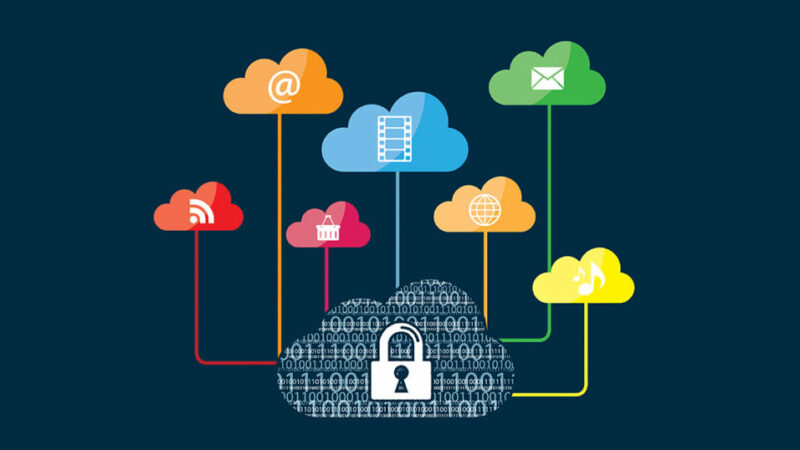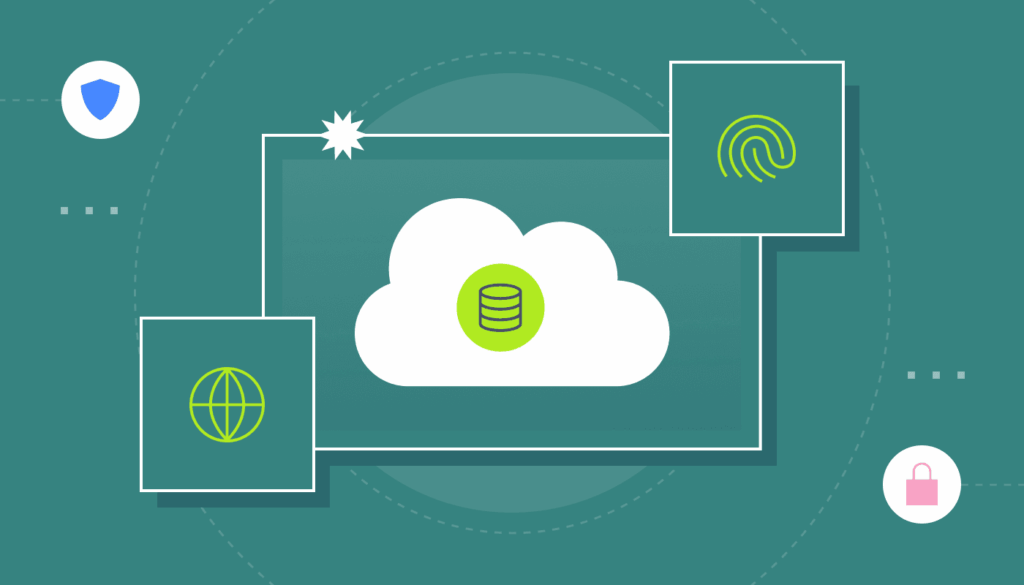How to Secure Confidential Data on Public Cloud Platforms

Unbreakable Walls: How to Secure Confidential Data on Public Cloud Platforms (AWS, Azure, GCP)
The shift to public cloud platforms (like Amazon Web Services, Microsoft Azure, and Google Cloud Platform) offers unprecedented scalability and cost efficiency. Yet, for organizations managing confidential data—from intellectual property and trade secrets to sensitive customer Personally Identifiable Information (PII) and financial records—the move is often paired with anxiety. Securing your most valuable digital assets in a multi-tenant environment is not a passive task; it requires a proactive, layered, and automated strategy.
This guide provides a definitive, SEO-optimized framework and checklist for implementing best practices for securing confidential data on any major public cloud, ensuring your data remains private, compliant, and protected against the most sophisticated threats.
Pillar 1: Mastering the Shared Responsibility Model (SRM)

The most common reason for cloud data breaches isn’t a flaw in the cloud infrastructure; it’s a misconfiguration by the customer. To secure your data, you must first understand the Shared Responsibility Model (SRM).
1. Understand Your Role: “Security in the Cloud”
The Cloud Service Provider (CSP) is responsible for “Security of the Cloud”—the physical security of the data centers, the core network, and the underlying infrastructure (hardware, virtualization).
Your Responsibility (Security in the Cloud) is absolute for:
- Data and Content: Encryption, classification, and access control.
- Identity and Access Management (IAM): User and service account credentials, Multi-Factor Authentication (MFA).
- Configuration: Operating system patching, network firewall rules (Security Groups, VPC configurations), and storage bucket settings.
Checklist Action: Formally document the specific security responsibilities for each cloud service model (IaaS, PaaS, SaaS) used by your organization to eliminate ownership gaps.
Pillar 2: Encryption as the Foundational Layer
Encryption is the last line of defense. If all other security layers fail, robust encryption ensures the exposed data is unreadable.
2. Mandatory Data Encryption at Rest (The Storage Lock)
All confidential data stored in object storage (S3, Azure Blob, GCS), relational databases (RDS, Azure SQL), or file systems must be encrypted.
- Customer-Managed Encryption Keys (CMEK): While CSPs offer default service-side encryption (SSE), the gold standard for confidential data is using Customer-Managed Keys (CMEK) via native Key Management Services (KMS) like AWS KMS, Azure Key Vault, or GCP Cloud KMS. This gives you full control over the encryption key lifecycle, including rotation and revocation. If you revoke the key, the CSP cannot decrypt your data.
- Hardware Security Module (HSM): For the absolute highest compliance and security requirements (like FinTech or Healthcare), consider using an HSM (e.g., AWS CloudHSM, Azure Dedicated HSM) to store your master keys physically separate from the cloud platform, providing tamper-resistant key storage.
3. Enforcing Data Encryption in Transit (The Secure Tunnel)
Data must be protected while traveling between your on-premises network, user endpoints, and the cloud, and also between different services within the cloud.
- TLS/SSL Enforcement: Configure all application load balancers, APIs, and service endpoints to enforce Transport Layer Security (TLS) version 1.2 or higher. Disable older, vulnerable protocols.
- Private Connectivity: Avoid routing traffic over the public internet wherever possible. Use Cloud VPNs, AWS Direct Connect, Azure ExpressRoute, or VPC Peering (or Private Link/Private Service Connect) to establish secure, private network connections between your cloud resources and corporate network.
Pillar 3: Zero Trust and Least Privilege Access Control
The Zero Trust principle—”Never trust, always verify”—is paramount in a distributed cloud environment.
4. Implement Strong Identity and Authentication
Weak credentials are still the easiest path for attackers to access confidential cloud data.
- Universal Multi-Factor Authentication (MFA): MFA must be mandatory for all console access, API access, and especially for privileged user accounts (Administrators, root users). Consider using hardware security keys for admin roles.
- Centralized IAM: Integrate your cloud environment with a centralized identity provider (like Active Directory/Azure AD) to manage all user accounts, enabling consistent application of policies and simplifying user de-provisioning when an employee leaves.
5. Enforce the Principle of Least Privilege (PoLP)
Permissions should be restricted to the bare minimum required for a user or service to perform its function.
- Role-Based Access Control (RBAC): Use RBAC to define roles with granular, non-generic permissions. Avoid using wildcards (
*) in policies. Instead of granting access to “all storage buckets,” grant access only to the specific, named bucket required. - Service Accounts and Managed Identities: Never assign powerful user credentials directly to an application. Use platform-native service accounts or Managed Identities to allow cloud services (e.g., a VM or a Lambda function) to securely access other resources (e.g., a database) without managing long-lived passwords.
Pillar 4: Proactive Security Posture and Automation
Security is not a static state; it’s a continuous process of auditing, monitoring, and remediation, best handled through automation.
6. Cloud Misconfiguration Management
A simple error—like making an AWS S3 bucket or a GCP storage object publicly accessible—is responsible for the vast majority of large-scale data leaks.
- Continuous Posture Management (CSPM): Deploy Cloud Security Posture Management (CSPM) tools (often cloud-native tools like AWS Security Hub or third-party solutions) to continuously scan your entire cloud environment. These tools automate the detection of misconfigurations against established security benchmarks (CIS, NIST).
- Infrastructure as Code (IaC) Scanning: Integrate security checks directly into your development pipeline (DevSecOps). Tools can automatically scan your IaC templates (Terraform, CloudFormation) before deployment to ensure they do not introduce known vulnerabilities or misconfigurations.
7. Data Loss Prevention (DLP) and Classification
You cannot protect data you don’t know you have. Data Loss Prevention (DLP) is essential for managing confidential data sprawl.
- Automated Data Discovery and Classification: Use cloud-native DLP services (like Google Cloud DLP, Microsoft Purview) to automatically scan storage buckets and databases to discover, identify, and tag sensitive data (e.g., credit card numbers, Social Security Numbers).
- Policy Enforcement: Configure DLP policies to automatically mask, tokenize, or redact confidential data that is discovered in non-compliant locations (like a public log file) or to block unauthorized outbound transfers of sensitive data.
8. Continuous Monitoring and Anomaly Detection
Assume compromise is possible and build systems to detect and respond instantly.
- Centralized Logging (SIEM): Aggregate all activity logs, access logs, and security alerts from your cloud platform (CloudTrail, Azure Monitor, Cloud Logging) into a centralized Security Information and Event Management (SIEM) system.
- User and Entity Behavior Analytics (UEBA): Use behavioral analytics to establish a baseline of “normal” user and service activity. Set alerts for anomalous behavior, such as an administrative account downloading an abnormal volume of data at midnight or a service accessing a region it has never accessed before.
Conclusion: Security by Design, Not by Accident
Securing confidential data on public cloud platforms is a continuous journey that starts with abandoning the false sense of security provided by legacy on-premises models. By internalizing the Shared Responsibility Model, making encryption and strong identity non-negotiable defaults, and leveraging security automation (CSPM, DLP), organizations can create a resilient, defensible cloud environment. The cloud is secure—but only when you actively take responsibility for the security in the cloud.
What is the single highest-priority security misconfiguration your team plans to address this quarter?